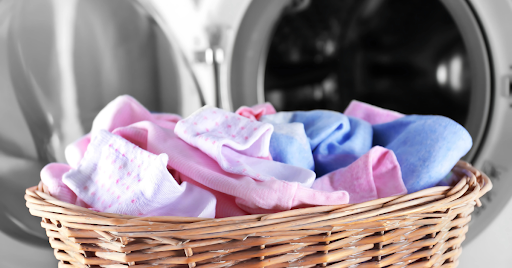Table of Contents
Compression socks are a game-changer for anyone looking to improve circulation, reduce swelling, or boost athletic performance. They are essential for long flights, managing medical conditions, or recovering after surgery. To remain effective and durable, these garments require proper care.
Unfortunately, improper washing can stretch the elasticity, weaken the compression properties, and render the socks ineffective. Don’t let poor maintenance ruin your investment. This guide will teach you how to wash your compression socks like a pro. You can protect their elasticity, maintain optimal compression, and significantly extend their lifespan with the right techniques.
What Are Compression Socks?
Compression socks are specially designed garments that apply gentle pressure to your legs, promoting better blood flow and reducing swelling.
How They Work:
- Encourage blood circulation from your lower limbs back to the heart.
- Reduce swelling, prevent blood clots, and alleviate discomfort in the legs.
Common Uses:
- Managing medical conditions like varicose veins and deep vein thrombosis.
- Supporting recovery post-surgery or during pregnancy.
- Enhancing athletic performance and post-workout recovery.
- Preventing swelling during long flights or prolonged periods of standing.
Types of Compression Socks:
- Graduated Compression: Tighter at the ankle, gradually loosening toward the top.
- Medical-Grade Compression: Prescribed for specific medical conditions.
- Athletic Compression: Designed for runners, cyclists, and other athletes.
Why Proper Care Matters for Compression Socks
Compression socks are an investment in your health and comfort. Improper care can drastically reduce their effectiveness and lifespan.
The Risks of Improper Washing:
- Loss of elasticity, compromising compression levels.
- Damage to the material, leading to tears and thinning.
- A build-up of sweat and bacteria causes odors and skin irritation.
The Benefits of Regular Cleaning:
- Ensures hygiene and freshness.
- Extends the life of your socks.
- Maintains the tight fit needed for effective compression.
Common Washing Mistakes to Avoid:
- Use harsh detergents or bleach.
- Wringing or twisting the socks.
- Exposing them to high heat during drying.
Understanding the Materials of Compression Socks
Understanding the materials that make up your compression socks is essential for proper care. Each fabric type has unique properties that influence how the socks feel, and perform, and should be maintained.

how to wash compression socks
Here’s a closer look at the most common fabrics:
- Nylon and Spandex: These materials are the backbone of most compression socks. Nylon provides strength and durability, while spandex offers the stretch and elasticity necessary for snug compression.
- Microfiber: Microfiber is a synthetic fiber known for its soft texture and breathability, making it ideal for people with sensitive skin.
- Cotton Blends: Cotton is often blended with synthetic fibers to create a balance of comfort and durability in compression socks.
Why Materials Matter
The type of fabric in your compression socks determines their performance, durability, and care requirements. Choosing socks with the right material for your needs, whether for sensitive skin, daily wear, or athletic performance can make a significant difference in comfort and longevity. Always check the care label to follow the manufacturer’s recommendations for your specific sock material.
How to Wash Compression Socks by Hand Like a Pro
Hand washing is the safest method to clean compression socks and preserve their elasticity. Follow these simple steps:

how to wash compression socks
- Prepare: Fill a basin with cold or lukewarm water and add a small amount of mild detergent. Avoid bleach or fabric softeners.
- Wash: Submerge the socks and gently massage them, focusing on areas like the heel, toe, and silicone bands. Let them soak for 10–15 minutes for stubborn dirt.
- Rinse: Replace the soapy water with clean water and rinse thoroughly until no detergent remains.
- Dry: Lay the socks flat on a clean towel, press gently to remove excess water, and air dry on a flat surface in a cool, shaded area. Avoid wringing, twisting, or exposing them to direct heat.
Pro Tip: If your socks have silicone bands, use a cotton ball dipped in rubbing alcohol to clean off any residue. This keeps them gripping your legs like new!
How to Wash Compression Socks in a Washing Machine
If you’re short on time, machine washing is an option with precautions:

how to wash compression socks
- Protect: Place the socks in a mesh laundry bag to prevent stretching or snagging.
- Cycle: Use a gentle or delicate cycle with cold water.
- Detergent: Opt for mild, bleach-free detergent. Avoid fabric softeners.
- Finish: Remove socks promptly after washing to maintain their shape.
Pro Tip: Avoid hot water or high-speed cycles, which can weaken the fabric and cause shrinkage.
How to Dry Compression Socks Safely
Air drying is the best method to maintain the elasticity and shape of your compression socks.
- Lay Flat: Place the socks on a clean towel or drying rack indoors.
- Avoid Sunlight: Keep them out of direct sunlight to prevent fading or weakening.
- No Heat: Never use a tumble dryer or place socks near a heater.
Pro Tip: When traveling, roll socks in a towel to remove excess water and speed up drying time.
How Often Should You Wash Compression Socks?
Compression socks play a crucial role in providing support and comfort, but their performance largely depends on proper care. Especially how frequently you wash them.
- Daily Wear:
Wash compression socks after every use to remove sweat, body oils, and bacteria. Regular washing helps maintain hygiene and keeps the socks fresh and comfortable.
- Special Scenarios:
Clean immediately after high-activity situations like workouts, hiking, or long flights. These activities expose socks to excess moisture and dirt, which can weaken the fabric.
- Why Regular Washing Matters:
Preserve the compression levels, ensuring the socks maintain their tight, supportive fit. Prevents odors, skin irritation, and material degradation caused by sweat and bacteria buildup.
- Best Practices:
Establish a consistent washing routine to keep socks clean and effective. Follow proper washing and drying techniques to extend their lifespan and ensure optimal performance.
When to Replace Your Compression Socks
Even with excellent care, compression socks have a limited lifespan.
Signs It’s Time to Replace:
- The socks feel looser and easier to put on, indicating loss of compression.
- Visible wear, like thinning fabric, pilling, or tears.
- Reduced effectiveness in relieving swelling or discomfort.
General Replacement Timeline:
Replace socks every 3–6 months if used daily. Rotating between multiple pairs can help extend their lifespan.
Pro Tips for Long-Lasting Compression Socks
Proper care can greatly extend the life of your compression socks, keeping them effective and comfortable. Here’s how to keep your socks in great condition:
- Rotate Pairs: Use multiple pairs to reduce wear and tear.
- Avoid Oils: Refrain from applying lotions before wearing socks.
- Store Smartly: Keep them folded neatly and away from direct heat or sunlight.
- Choose Quality: Invest in durable, high-quality socks for better performance.
Conclusion
Caring for your compression socks is simpler than you might think, but it’s also essential to ensure they remain effective and durable. By adopting proper washing and drying techniques, you can keep them fresh, functional, and comfortable for everyday use. Regular maintenance not only protects your investment but also ensures you continue to enjoy their health benefits, like improved circulation, reduced swelling, and overall leg comfort.
Ready to extend the life of your compression socks? Share this guide with friends and explore styleofhomes.com for more home care and wellness tips!
